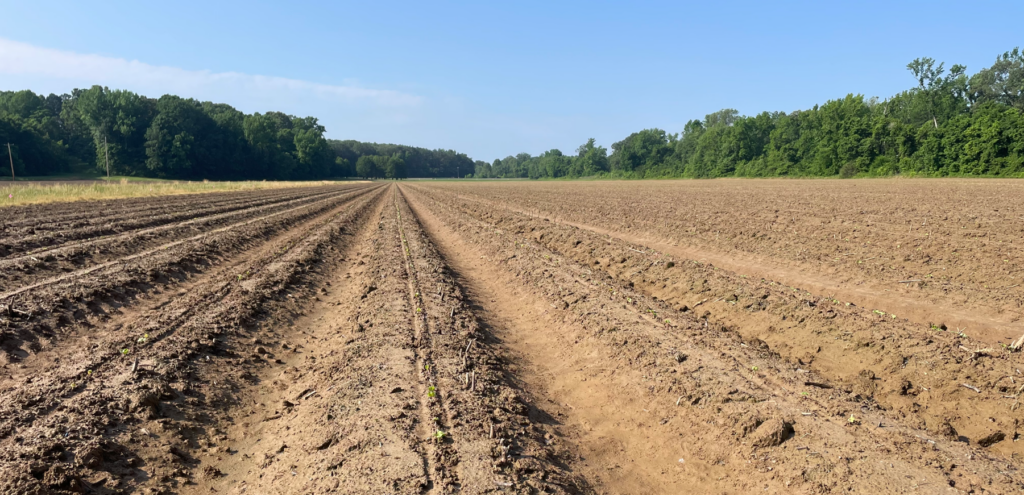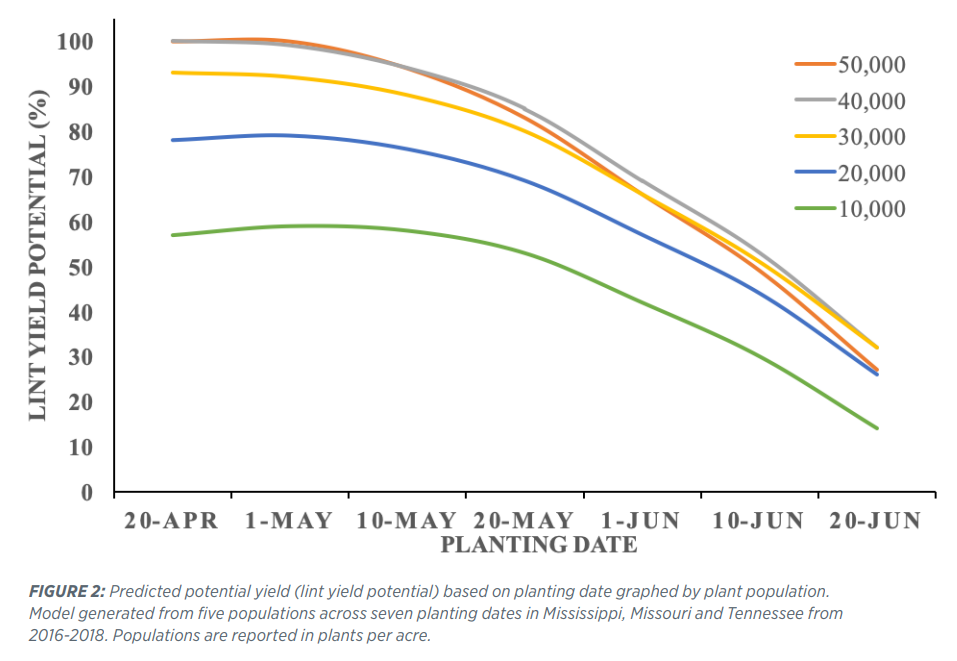
Although many in the state have finished planting, several are touching up wet spots or the occasional drowned out field. Unfortunately, others have seemed to catch two-fold the rainfall of the rest of the state and still have a large amount of ground to cover before they’ll near completion. In this article, I briefly discuss several important factors to consider during the replant or late plant scenario and provide a little data on yield potential by plant date.
Over the past few years I’ve pulled back on posting planting conditions/recommendations. We’ve not had a real April cotton planting window in recent memory, and in that same period the stars have only aligned to allow a May 1st planting twice. Generally speaking, in 2023, our best looking crop appears to have been planted during the first week in May. You likely recall that nighttime temperatures for the first 4 days in May didn’t break 45F. Soil temps held in the mid to upper 50s through most of this snap, but I still pushed those who called to hold off until nighttime temps warmed to the mid 50s. Hindsight is 20/20. Although the cotton planted in this window did not have any DD60 accumulation for several days following planting, most of it also did not receive a large (greater than an inch) rainfall event in the days following planting. The majority of the replant scenarios were planted in the second week in May when temperatures were great but a large rainfall event closely followed the planter. In 2023, large rainfall events are again the common, dominating factor driving replants in our area.
Dr. Shawn Butler focused on population and yield potential of planting date for his PhD. You can review one of his Extension publications by clicking here. I want to pull several points out of this work for you to consider as you begin to think about replanting this year. First, the yield potential of the replant may be generally lower than the yield potential of the existing stand. We can tolerate skips up to 3 ft and only have to have around 2 plants per row ft to warrant keeping the current stand. If you only have a portion of the field which didn’t come up, it is best to only replant that area since you’ll likely be sacrificing yield if you replant the entire field.
Second, it is important to note the response to plant population as we move into later planting dates. With later planting dates, earliness is obviously key. Unfortunately, later planting dates generally lead to higher first fruiting branches. Couple this with a higher population, which also drives first fruiting branches higher, and you’ve set yourself up for a very tough fight. I’d encourage you to consider targeting a final plant stand no greater than 37,500 for replants. Protection of first position fruit is crucial and reduced N rates should be considered for the later planted acres. 
Finally, a few words to those who have either yet to plant cotton or are considering switching to soybeans. The data graphed above were collected from DP 1522 B2XF. Many of you likely remember this variety as a relatively indeterminate, early-mid variety. Although the varieties we are growing now are higher yielding, I would still expect the response of yield potential to planting date to be very similar; a June 1st planting will likely deliver only 75% of what you might make from a May 1st planting. Management and environment may push this number higher or lower but it is a good number to consider for budgeting purposes.

